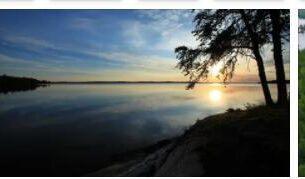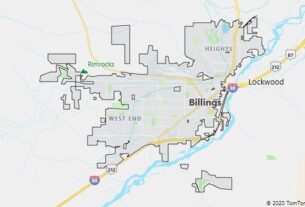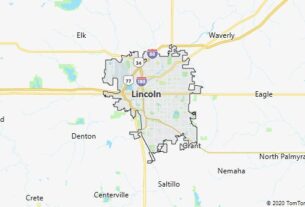CULTURE: CINEMA
Severe censorship and US dominance, still persisting, in distribution and theaters conditioned local cinema in the first decades. In 1939, with the creation of the Office National du Film, the state set out to “introduce Canada to Canadians” through educational and didactic films. Paradoxically, the first management positions were entrusted to two foreigners: the documentary maker J. Grierson (1898-1972), first commissioner, and N. McLaren (1914-1987), master of experimental animation, both Scottish. But their programming and their example gave excellent results in documentary making, including television, and in animated drawing. Without soundstages, without stars and without market, the young filmmakers discovered the filmed investigation and the cinema-truth and made it a trend that became a school. This current, in order to better understand the present and arrive at the identification of the Canadian man in the variety of his origins, was connected to the past through albums of testimonies and memories, as in Colin Low’s trilogy on pioneers and in the other that Pierre Perrault (1927-1999), a poet of the cinema, reserved in the sixties to the residents, in particular to the elderly, a ‘ Le règne du jour, Les voitures d’eau). The foundation in Montréal of a Francophone cultural center stimulated the birth of feature films and the work of directors such as Claude Jutra (1930-1986), Gilles Groulx, J.-P. Lefebvre, Gilles Carle; while in Toronto and Vancouver English-speaking production was developing with W. Koenig, D. Owen, A. King, R. Spry, D. Shebib, H. Hart, E. Till. In the seventies the best results were obtained in Québec with a narrative film such as Mon oncle Antoine (1971) by Jutra, while in the field of cinéma-direct the political-social commitment grew with Le mépris n’aura qu’un temps by A Lamothe (b. 1928), Un pays sans bon sens e The Acadie, the Acadie! (1970) by the aforementioned Perrault. In fact, during the Sixties, French-speaking cinema had joined the “new waves” then emerging in the world. In the following decade, however (and the process continued throughout the 1980s), it clashed with the colonial cinematic reality mentioned, which leaves very little room for national production. However, titles such as Les dernières fiançailles (1973) or Les vieux pays où Rimbaud est mort (1976) by Lefebvre, Réjeanne Padovani (1973) by Denys Arcand (b.1941), Les ordres (1974) by Michel Brault (1928) have established themselves. -2013), JA Martin photographe (1977) by Jean Beaudin, while the most “commercial” director continues to be Gilles Carle (1929-2009) who achieved success at home with La tête de Normande Saint-Onge (1975) and presented the saga in 1981 at Cannes Les Plouffe, and in 1999 Moj, j’me fais mon cinéma. The documentary movement, always excellent, has among other things discovered the Indian minority (a well-known film is Money at all costs, 1974, with actor Richard Dreyfuss). As for English-speaking Canadian cinema, we remember P. Donovan and M. O’Connell. At the end of the Eighties, the works of Patrice Rozéma (I heard the sirens sing, 1987) and the French-speaking Denys Arcand had great international success (The decline of the American empire, 1987; Jésus of Montréal, 1989). The 1990s witnessed a growing internationalization of Canadian cinema. Alongside confirmed native talents, such as the gloomy and visionary one of David Cronenberg (b. 1943), author of Crash, 1996; eXistenZ, 1999; Spider, 2002; A history of violence, 2005), and interesting new discoveries such as François Giraud, author of the unusual 32 small films about Glen Glould (1993), numerous films by stateless directors are produced, such as the Hungarian exile István Szabó born in 1938 (Taste of Sunshine, 1998; Being Julia, 2004), the Greek Constantin Costa Gavras, born in Athens in 1933, director of No Others Life, 2000 and Headhunters, 2005; and above all Atom Egoyan (b.1960), Armenian of origin but Canadian as a cultural background, who with works such as Exotica (1994), Il dolce Tomorrow (1997) and Il Viaggio di Felicia (1999) represents one of the most interesting cinematographic personalities of these years. In 2002 he also directed Ararat, il monte dell’Arca, a film dedicated to the tragedy of the Aarmenian genocide, and in 2006 False Truth. Among the most famous and appreciated Canadian film actors we must remember Jim Carrey (b.1962), Dan Aykroyd (b.1952), Keanu Reeves (born in Lebanon and raised in Canada), Donald Sutherland (b.1934), Hayden Christensen (b.1981), Rayan Gosling (b.1980) and directors James Cameron (b. 1954), David Cronenberg (b.1953) and Paul Haggis (b.1952).
Nunavut Territory
According to a2zgov, Nunavut Territory [- ter ɪ tər ɪ; Inuktitut “our country” ], is the administrative area in the north of Canada, north of 60 ° north latitude, 1,877,779 km 2, (2017) 38,000 residents, 84% of them Inuit; The administrative center is Iqaluit (formerly Frobisher Bay) on Baffin Island, other regional centers are Rankin Inlet and Cambridge Bay.
The Nunavut Territory covers the area from the northern border of the province of Manitoba over large parts of the Canadian-Arctic Archipelago to Greenland. This corresponds to a fifth of the total area of Canada. The Inuit were given hunting and fishing rights throughout the country, and on around 36,000 km 2 they were given mining rights or a say and share in the profits in the exploitation of mineral resources; over 350,000 km 2came into their possession with the right to self-government. They received a lump sum of 1.15 billion Canadian dollars as compensation for further claims, but the Territory continues to rely on payments from the Canadian central government. In 2016, unemployment was 17.4%, over a third of the Inuit population is under the age of 15, and the birth rate is well above the Canadian average. The level of education has risen in recent years, but is still lower than the national average.
The Nunavut Territory was founded in 1999 after an agreement between the Canadian government and the Inuit stipulated in 1993 to separate the eastern part of the Northwest Territories up to about 110 degrees longitude as the “Land of Nunavut”.




